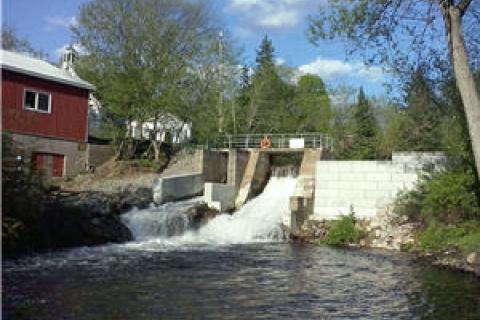
I was fishing one of our local brook trout rivers the other day when I was reminded of something that makes a huge difference in fly fishing success – fishing current seams. A current seam is a recognizable feature in flowing water where two current flows meet and one is faster than the other due to the geography of the river.
In this case, the current seams were caused because the flow was concentrated through two narrow openings under a bridge. These ran beside water slowed by the central bridge pier and the shallower bank. So when that sped up water spilled out on the other side, two very prominent current seams formed on the edge of each. And that’s where the brook trout were.
 |
| At least one current seam (where the white water meets the blue) is clearly visible in this photo. Find trout by casting your fly upstream, watch the drift and adjust your cast until you find that sweet spot. |
The result was predictable; when we drifted nymphs at the right depth (ticking bottom in this case) along the current seam, we got action. When our drifts were sloppy and off by as little as a foot, we were just wasting time.
The attraction of fish to a current seam is a simple one. They station in the slower water near the faster flow and watch food (or flies) go by. When something looks edible, they rush out and take it. Then they return to the relative comfort of the slower water, thus conserving energy, until the next bit of food they want comes along.
If you really study a current seam you will often notice that it is not always caused by structures as obvious as a bridge. Sometimes a boulder or two is all that it takes to create one. Sometimes they are caused by a bend in the river or the shallow water beside a pool. The point is it can be caused by quite a few things and a savvy angler looks for them, especially when they are in conjunction with other favorable conditions. For example, if you find a nice rock along a current seam, that’s where trout will station. It’s the spot within the spot.
Fishing along a current seam is a bit of a trial and error thing. You cast to one spot upstream, watch your drift and then adjust accordingly on the next cast until your fly is running along that sweet, sweet spot.
Once you get in the groove, it’s not so hard. And as yesterday proved once again; it’s worth the effort.
Looking for more information on fishing trout? Go to Bass Pro 1Source, keyword trout for fishing tips, buying guides and how to guides.
- 4112 views

